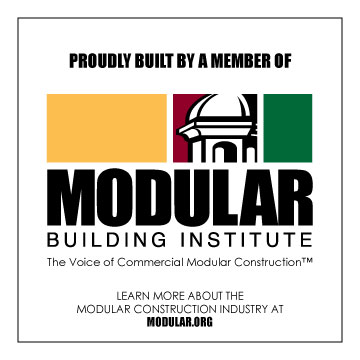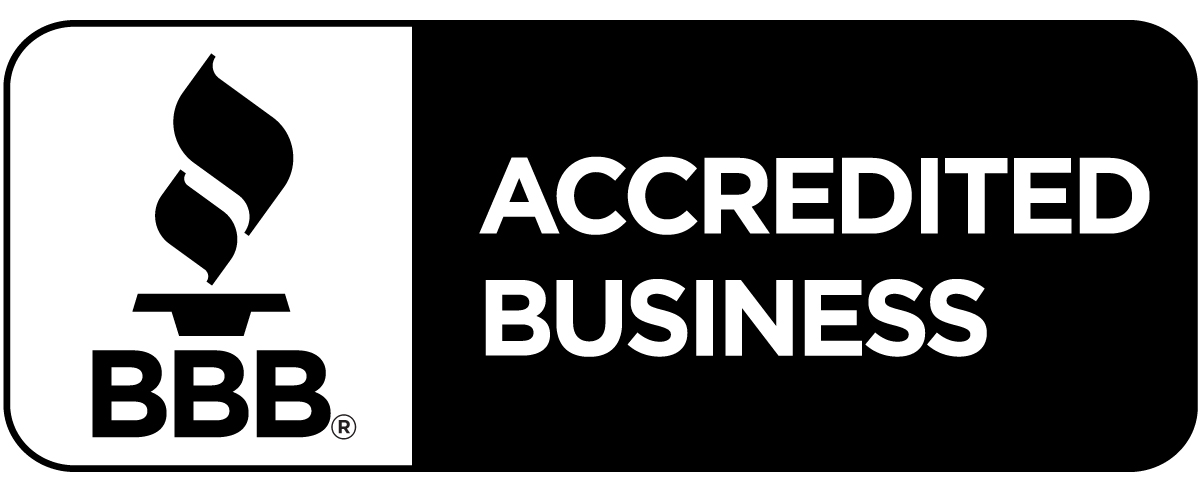n an effort to combat rising housing costs California passed major legislation allowing any house zoned for single-family to build a second rentable unit, known as an accessory dwelling unit. This has opened up massive opportunities for California homeowners allowing them maximize their property values. If you’re interested in building an accessory dwelling unit, you’ve come to the right place!
Contact info@usmodularinc.com or 888-987-6638 for more information!
18.04
18.04.007 – Accessory Dwelling Unit
“Accessory dwelling unit” means an attached or a detached residential dwelling unit which
provides complete independent living facilities for one or more persons. It shall include permanent provisions for living, sleeping, eating, cooking, and sanitation on the same parcel as the single-family dwelling is situated.
18.04.210 – Dwelling unit.
“Dwelling unit” means a building or portion of a building containing one or more rooms, a
separate kitchen, access to a bathroom, and designed for occupancy by one family for living and/or sleeping purposes, including nonpaying guests and servants employed on the premises.
18.04.215 – Dwelling unit, additional.
See “Accessory Dwelling Unit.”
18.08.020
18.08.020 – Permitted and conditional uses in residential districts.
|
Permitted Uses |
Multiple Dwelling R-3 and
R-2 |
Medium Density R-1 |
Low Density R-1-A |
Very Low Density R-1-B |
Open Residential R-1-C |
| (11) One accessory dwelling unit which conforms with the size and standards of Chapter 18.31 of this title |
X |
X |
X |
X |
X |
18.20.030
|
18.20.030 – Required number of parking spaces.
limited to, as covered spaces, uncovered spaces, or tandem spaces, or by the use of mechanical automobile parking lifts.
– Onsite parking is not required for an accessory dwelling unit in any of the following instances:
(1) The accessory dwelling unit is located within one-half mile of public transit. (2) The accessory dwelling unit is located within an architecturally and
historically significant historic district.
(3) The accessory dwelling unit is part of the existing primary residence or an existing accessory structure.
(4) When on-street parking permits are required but not offered to the occupant
of the accessory dwelling unit.
(5) When there is a car share vehicle located within one block of the accessory dwelling unit.
Chapter 18.31
Chapter 18.31 – ACCESSORY DWELLING UNITS Sections:
18.31.010 – Purpose.
The purpose of this chapter is to comply with amendments made in 2016, to California Government Code Section 65852.2 which provides for local jurisdictions to set standards for the development of accessory dwelling units so as to increase the supply of smaller and affordable housing while ensuring that they remain compatible with the existing neighborhood.
(Ord. 886 § 6 (part), 2004)
18.31.020 – Accessory dwelling unit permit required.
The zoning administrator or his/her designee shall issue an accessory dwelling unit permit as a ministerial permit to allow for an accessory dwelling unit; provided, that a completed application is submitted which demonstrates that the accessory dwelling unit complies with the requirements contained in this chapter. In addition to an accessory dwelling unit permit, the applicant shall be required to obtain a building permit prior to the construction of the accessory dwelling unit.
(Ord. 886 § 6 (part), 2004)
18.31.030 – Definition.
An “Accessory dwelling unit” means an attached or a detached residential dwelling unit which provides complete independent living facilities for one or more persons. It shall include permanent provisions for living, sleeping, eating, cooking, and sanitation on the same parcel as the single-family dwelling is situated. An accessory dwelling unit also includes the following:
(A) An efficiency unit, as defined in Section 17958.1 of Health and Safety Code as follows,
“Notwithstanding Sections 17922, 17958, and 17958.5, a city or county may, by ordinance, permit efficiency units for occupancy by no more than two persons which have a minimum floor area of 150 square feet and which may also have partial kitchen or bathroom facilities, as specified by the ordinance. In all other respects, these efficiency units shall conform to minimum standards for those occupancies otherwise made applicable pursuant to this part.”
(B) A manufactured home, as defined in Section 18007 of the Health and Safety Code as follows,
“Manufactured home,” for the purposes of this part, means a structure that was constructed on or after June 15, 1976, is transportable in one or more sections, is eight body feet or more in width, or 40 body feet or more in length, in the traveling mode, or, when erected on site, is 320 or more square feet, is built on a permanent chassis and designed to be used as a single-family dwelling with or without a foundation when connected to the required utilities, and includes the plumbing, heating, air conditioning, and electrical systems contained therein. “Manufactured home” includes any structure that meets all the requirements of this paragraph except the size requirements and with respect to which the manufacturer voluntarily files a certification and complies with the standards established under the National Manufactured Housing Construction and Safety Act of 1974 (42 U.S.C., Sec. 5401, and following).[FN1]
(C) “Passageway” means a pathway that is unobstructed clear to the sky and extends from a street
to one entrance of the accessory dwelling unit. (Ord. 886 § 6 (part), 2004)
18.31.040 – Allowed use.
Accessory dwelling units shall be allowed as permitted uses in the R-1-C open residential, R-1-B very low density, R-1-A low density, R-1 medium density and the R-2 low density and R-
3 high density multiple-dwelling districts; provided, that the submitted application satisfies the
requirements set forth in this chapter. (Ord. 886 § 6 (part), 2004)
18.31.050 – Accessory dwelling unit regulations.
Accessory dwelling units shall be subject to the following regulations:
(1) No more than one accessory dwelling unit may be constructed on any site. An accessory dwelling unit shall not be allowed on a site with more than one unit.
(2) Owner Occupancy. One of the dwelling units on the site shall be owner-occupied. For purposes of this section, “ownership” is defined as a majority (i.e., fifty-one percent or greater) interest in the property in question. Property owned in joint tenancy shall be considered single ownership for any party named. Property owned in tenancy in common shall be considered a single ownership for any party named, unless shares are specified, in which case “ownership” requires a majority interest.
(3) Zoning Development Standards. The accessory dwelling unit shall comply to all development standards included in the underlying zoning district, including standards for lot coverage, setbacks, height and the like.
(4) Separate Entry, Kitchen and Bathroom. The accessory dwelling unit shall contain a separate entrance, kitchen and bathroom; both the existing dwelling and the accessory
dwelling unit shall comply at a minimum with all requirements of the current housing code; and the accessory dwelling unit shall comply with the building code in effect at the time it was constructed.
(5) Location of Accessory dwelling unit. The accessory dwelling unit may be within, attached to, or detached from the primary dwelling unit. If detached, the accessory dwelling unit shall be separated from the primary dwelling and any accessory structure(s) a minimum of three feet.
(6) Architectural Compatibility. The accessory dwelling unit shall comply with the following design standards:
(A) Architectural Style and Form. Architectural style and building form shall match the style and form of the main building on the site.
(B) Architectural Details. Architectural details, including but not limited to, windows, roof pitch, and trim shall match the main building on the site.
(C) Color. The color of the accessory dwelling unit shall match the color of the main building on the site.
(D) Materials. The materials of the accessory dwelling unit shall match the materials of the main building on the site.
(E) Lighting. Lighting shall be shielded and/or directed so that it does not glare off-site or illuminate onto adjacent and nearby property.
(F) Privacy. Windows shall be located to avoid line of sight to windows of adjacent properties. Obscured glass and other techniques may be used to avoid line of sight.
(G) Views. The accessory dwelling unit shall not increase a blockage of any view of the bay or Mount Tamalpais caused by the main building on the property as viewed from the main building on an adjacent property.
(H) Sunlight. The accessory dwelling unit shall not increase the shadow on any window of the main building on any adjacent property. The shadow shall be measured on the winter solstice between the hours of ten a.m. and four p.m.
(I) Landscaping. Any tree over 30 inches in circumference, removed in conjunction with the construction of an ADU must be replaced by a 24” box tree within the yard from which it will be removed.
(7) Parking. Parking on the site shall conform to the requirements for accessory dwelling units as contained in Chapter 18.20, Off-Street Parking and Loading.
– One parking space shall be required for each bedroom of the proposed accessory dwelling unit in addition to those required for the primary unit.
– The required parking spaces for the accessory dwelling unit may be uncovered. If an accessory dwelling unit requires two additional on-site parking spaces, they may be uncovered and in tandem with each other.
– Parking for an accessory dwelling unit shall not be in tandem with parking for the primary unit on the site. With the approval of the town engineer, one of the parking spaces for an accessory dwelling unit may be located within the front setback between an existing driveway and the closest side of the property line if the slope of the site is ten percent or less.
– When a garage, carport, or covered parking structure is demolished in conjunction with the construction of an accessory dwelling unit, those off-street parking spaces shall be replaced. The replacement spaces may be located in any configuration on the same lot as the accessory dwelling unit, including, but not limited to, as covered spaces, uncovered spaces, or tandem spaces, or by the use of mechanical automobile parking lifts.
– Onsite parking is not required for an accessory dwelling unit in any of the following instances:
(1) The accessory dwelling unit is located within one-half mile of public transit.
(2) The accessory dwelling unit is located within an architecturally and historically significant historic district.
(3) The accessory dwelling unit is part of the existing primary residence or an existing accessory structure.
(4) When on-street parking permits are required but not offered to the occupant of the accessory dwelling unit.
(5) When there is a car share vehicle located within one block of the accessory dwelling unit.
(8) Permanent Foundation. A permanent foundation shall be required for all accessory dwelling units.
(9) Size of Unit. The floor area of accessory dwelling units shall not be larger than twelve hundred gross square feet.
(10) Elevation. If the elevation of the existing main house on the site is below the Town’s base flood elevation then the floor level of the accessory dwelling unit shall be at least as high as the elevation of the existing main house.
(11) Street Address Required. Street addresses shall be assigned to all accessory dwelling units to assist in emergency response. (Ord. 886 § 6 (part), 2004)
(12) The accessory dwelling unit is not intended for sale separate from the primary residence and may be rented.
(13) No setback shall be required for an existing garage that is converted to an accessory dwelling unit, and a setback of no more than five feet from the side and rear lot lines shall be required for an accessory dwelling unit that is constructed above a garage.
(14) The accessory dwelling unit shall not be rented for less than 30 days.
(15) The increased floor area of an attached accessory dwelling unit shall not exceed 50 percent of the existing living area, with a maximum increase in floor area of 1,200 square feet.
(Ord. No. 910, § 37, 4-21-2009)
18.31.060 – Christmas Tree Hill overlay district.
The total number of accessory dwelling units in the Christmas Tree Hill overlay district shall not exceed the total number permitted by Sections 18.18.405(K) and 18.18.410 of this title. This
provision shall not apply to accessory dwelling units contained within the existing space of a single-family residence or accessory structure.
(Ord. 886 § 6 (part), 2004)
18.31.070 – Deed restriction.
The town shall require the property owner to record a deed restriction in the official records of Marin County, California requiring owner-occupancy of the unit of either the primary unit or accessory dwelling unit at all times. Proof of recordation shall be submitted to the planning division prior to issuance of a building permit. An accessory dwelling unit shall not be sold independently of the primary dwelling on the parcel.
(Ord. 886 § 6 (part), 2004)
18.31.080 – Procedures.
An application for an accessory dwelling unit permit shall be filed with the planning department. No public hearing shall be required but a courtesy notice shall be given in the manner prescribed in Chapter 18.36, Administration, at least ten days prior to a decision.
(Ord. 886 § 6 (part), 2004)
18.31.090 – Administrative Review.
The decision of the planning director granting or denying an accessory dwelling unit permit is a ministerial decision as required by State law. Ministerial approvals are not subject to review at a public hearing. In considering accessory dwelling unit permits, review is limited to the objective standards and criteria established by the town as set forth in Section 18.31.050 of this chapter for accessory dwelling units related to parking, height, setback, lot coverage, landscape, architectural review, maximum unit size, and standards that prevent adverse impacts on any real property that is listed in the California Register of Historic Places. A request for an Administrative review that is limited to the objective standards and criteria for accessory dwelling units (18.31.050) may be made in by filing an application and paying applicable fees with the Planning Department. Any application for administrative review must be filed with the planning department within ten calendar days of the date that the decision of the zoning administrator or planning commission was made, whichever is applicable. Any Administrative Review proceedings before the planning commission or the town council shall not be public hearings. The planning commission and town council shall apply the criteria contained in 18.31.050 in an objective and ministerial manner. All costs of the proceedings shall be the responsibility of the party requesting review. The Administrative Reviews should be scheduled so as to minimize delay of review or approval of an accessory dwelling unit.
(Ord. 886 § 6 (part), 2004)



